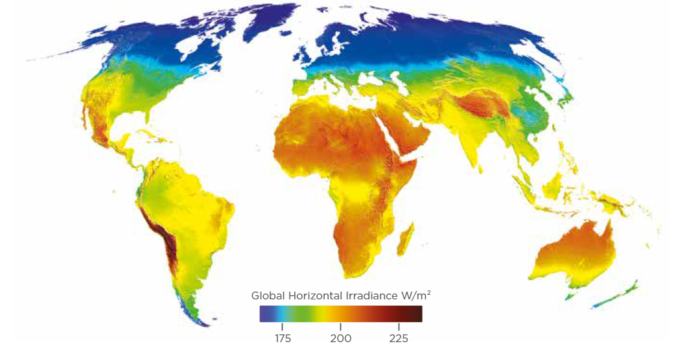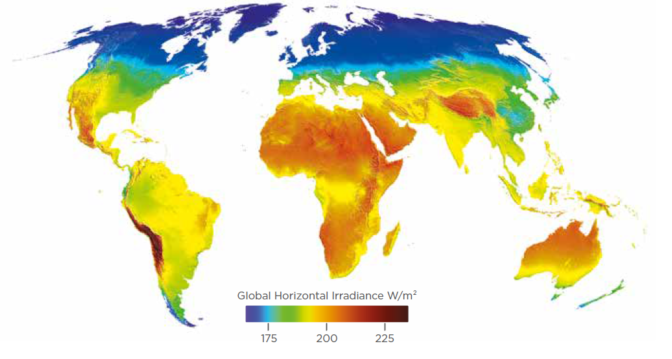There are a great number of challenges standing between the current global energy landscape and decarbonization. Even though the installation of renewable energy production capacity is picking up speed, experts say that the growth rate is insufficient to achieve the goals set forth by the Paris Climate Agreement. However, in some places, the amount of renewable energy currently being produced is already too much for the grid to handle in some locations, with prices even going negative when supply and demand are severely mismatched.
The problem is that renewable energies like solar and wind power are variable – meaning that their production levels wax and wane according to factors outside of human control. Fossil fuels can be burned more or less according to energy demand, whereas the sun has to be shining and the wind blowing for renewable energy production. And, unfortunately, peak production hours are often diametrically opposed to peak demand hours. Residences are turning all their lights on and firing up their stoves for dinner just as the sun is setting on the solar panels that would power them.
There are a few potential solutions for adapting our energy infrastructure – which was designed to work around base load fossil fuels – to work around the ups and downs of renewable energy. One approach includes demand-based pricing to stabilize the market. Another critical solution is energy storage, in which giant batteries collect and store excess renewable energy when supply outstrips demand and then feeds it back into the grid when that equation flips.
Right now energy storage is primarily carried out through the use of lithium-ion batteries, which are able to store this energy for hours. But to truly solve the variability issue we will need long-term energy storage, capable of storing energy for weeks or months to adapt to seasonal production variance – a nascent field that is still squarely in the research and development phase of buildout.
But while researchers experiment with different energy storage solutions, other scientists are working on a completely different approach to the variability puzzle. It involves piping renewable energy from where it isn’t needed to places that it is – halfway across the world via giant underwater cables. While the sun is shining strongly on Europe, for example, its excess clean energy could be sent along the floor of the Atlantic Ocean and over to where people are just waking up, turning on the lights, and firing up their appliances on the East Coast of the United States.

“When the sun is at its zenith, we probably have more power in Europe than we can really use,” Simon Ludlam, founder and CEO of Etchea Energy, was recently quoted by CNN Climate. “We’ve got wind and we’ve also got too much solar. That’s a good time to send it to a demand center, like the East Coast of the United States. Five, six hours later, it’s the zenith in the East Coast, and obviously, we in Europe have come back for dinner, and we get the reverse flow.”
A transatlantic pipeline would not be the first of its kind – there are already subsea cables being constructed around the world for exactly this purpose, with the potential of creating a ‘global power grid.’ But a cable connecting the renewable energy industries in North America and Europe would be by far the biggest and most ambitious of such projects. The proposed cable would be able to transport 6 gigawatts of energy bilaterally at the speed of light.
This project is just the latest proposal for a rapidly developing industry. Indeed, the subsea cable sector is set to take off around the world, and the market is expected to grow to a whopping $32.86 billion by 2032. In addition to the transatlantic cable proposal, Beijing has floated the idea of building such a subsea cable all the way from China to Chile, and another project is being developed to connect Australia with Singapore.
While this innovative renewable energy solution yields enormous promise for staying on a viable pathway to net zero, it’s not without its drawbacks. These cables could be vulnerable to sabotage by conflicting world powers, with potentially dire consequences to the communities and economies relying on the connected grids. And Russia has shown itself to be more than capable of such antagonism, CNN pointed out in a recent article declaring that “the world’s future energy wars will be fought under the sea.”
No energy system, however, is invulnerable to attack. Rather, the key to energy security lies in diversified markets, fail safes, and redundancies. The idea behind subsea cables is not to replace energy storage but to provide another approach to decarbonizing the grid at a time when all solutions are welcome and needed.
By Haley Zaremba for Oilprice.com


